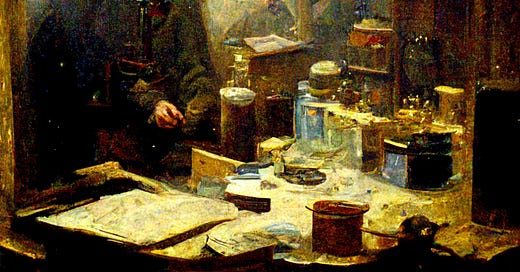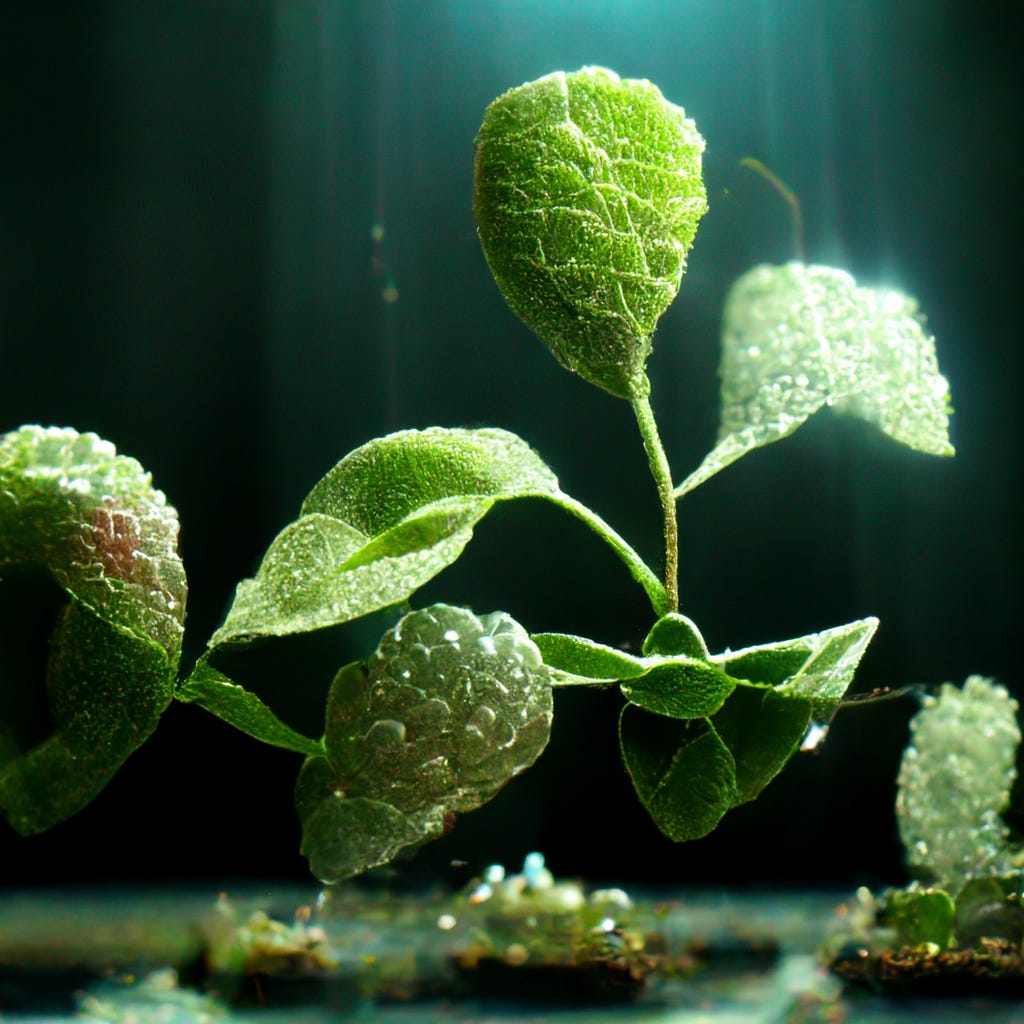Foreword
I never thought much of photosynthesis. I mean, definitely a vital part of our existence, but nothing to be in awe of. And then, out of nowhere, a friend of mine from Loughborough university sends me an article by Hann, Overa et al. about the vital impact that artificial photosynthesis has on food production and what potential implications it entails. I saw the opportunity, and I jumped on it, and here we are - artificial photosynthesis is a topic of today’s blog post.
The critical thing to understand before reading is that artificial photosynthesis is not directly what we think it is. Artificial photosynthesis is the process of using light energy to drive chemical reactions that convert carbon dioxide and water into useful products like fuels or other chemicals. The process mimics natural photosynthesis but can be optimized to produce a wider range of products more efficiently. One key difference between artificial and natural photosynthesis is that artificial systems can use a broader spectrum of sunlight, including infrared and ultraviolet light, that plants cannot utilize. Additionally, artificial systems can be designed to optimize the conversion of light into chemical energy, making them up to 10 times more efficient than natural photosynthesis.
As it is written in the books
The history of artificial photosynthesis is a long and complicated one. In its simplest form, artificial photosynthesis is the process of using light to split water molecules into hydrogen and oxygen. This process was used to produce energy or to create new fuels initially, but new ideas are fueling the research today. The first recorded instance of artificial photosynthesis was in 1883 when Russian chemist Nikolai Menshutkin used light to split water molecules into hydrogen and oxygen gas. However, it was not until the early twentieth century that scientists began to truly understand the potential of artificial photosynthesis.
In 1912, British scientist Sir William Crookes published a paper detailing his experiments with using sunlight to decompose water vapour. Crookes’s work paved the way for future research on artificial photosynthesis. Crookes himself is a whole other character, as he discovered an element called Thallium and indirectly took part in the production of a nitrogen bomb, but alas, that’s not the topic of today. In the years that followed, numerous scientists conducted experiments on using light to split water molecules, but it was not until 1935 that German chemist Fritz Haber discovered the key reaction that makes artificial photosynthesis possible: the reduction of carbon dioxide (CO2) to form methane (CH4).
You see, mass production of methane is still a complicated process, which nevertheless is vital in the “greenization” of Earth. There were recent developments in the field which allow us to hope for a more sustainable future.
While Haber’s discovery was an important step forward, it would be another 20 years before scientists made any significant progress in developing artificial photosynthesis as a practical technology. In 1954, American chemists Robert Burns Woodward and William Knowles successfully synthesized CH4 from H2O and CO2 using visible light as their energy source. This achievement opened up the possibility of using solar energy to generate methane – a clean-burning fuel that could potentially replace fossil fuels like coal and oil.
In subsequent years, researchers made further advances in understanding and improving upon the basic reactions involved in artificial photosynthesis. Today, there are many different types of systems being developed for commercial use; however, challenges remain in terms of efficiency and cost-effectiveness.
What are we left with today?
Artificial photosynthesis is an area of research that is gaining increased attention in recent years due to the potential it holds for addressing some of the most pressing challenges facing humanity today. These include the need for renewable energy sources, the need to reduce greenhouse gas emissions, and the need to find new ways to produce food and other essential materials.
The process of artificial photosynthesis mimics the natural process of photosynthesis that takes place in plants. In plants, sunlight is used to convert water and carbon dioxide into oxygen and glucose. This process provides the plant with its energy needs and also produces oxygen as a by-product. Similarly, in artificial photosynthesis systems, sunlight is used to convert water and carbon dioxide into hydrogen and oxygen. The hydrogen can then be used as a fuel source, while the oxygen can be released into the atmosphere.
There are many potential advantages of using artificial photosynthesis to generate hydrogen fuel. First, it is a renewable energy source that does not produce greenhouse gases during operation. Second, it has the potential to be much more efficient than current methods of producing hydrogen fuel from fossil fuels. Third, it could provide a local source of fuel that would not be subject to global price fluctuations. Finally, it has the potential to help address problems associated with food production, such as soil erosion and water pollution.
Despite these advantages, there are also significant challenges associated with developing artificial photosynthesis systems that are capable of large-scale deployment. One challenge is designing systems that are able to efficiently capture and utilize solar energy. Another challenge is developing storage methods for hydrogen fuel that are safe and scalable. Finally, researchers must overcome economic hurdles associated with the large-scale deployment of any new technology.
What is the community working on now?
The field of artificial photosynthesis is constantly evolving, with new research and researchers emerging all the time. In recent years, there have been some major breakthroughs in the field that are paving the way for even more advances in the future. Here is a look at some of the latest research and researchers in artificial photosynthesis.
One of the most promising areas of research is developing materials that can more efficiently convert sunlight into chemical energy. Researchers are working on developing new semiconductor materials that can absorb a wider range of wavelengths of light, as well as improve charge separation and transport within the material. This could lead to more efficient solar cells and photocatalysts for artificial photosynthesis.
Another area of active research is in finding ways to store solar energy so it can be used when needed, even at night or during cloudy days. One approach being explored is using hydrogen gas as a storage medium. Hydrogen can be produced from water by splitting it into its constituent atoms using photocatalysts and solar energy. When hydrogen gas is later recombined with oxygen from the air, it produces electricity and heat – making it an ideal storage medium for solar energy.
There are also many researchers working on improving the overall efficiency of artificial photosynthesis systems. This includes developing better catalysts for water splitting and improving methods for collecting and storing solar energy. With continued advances in these areas, it is hoped that artificial photosynthesis will become a viable option for large-scale renewable energy production in the future.





